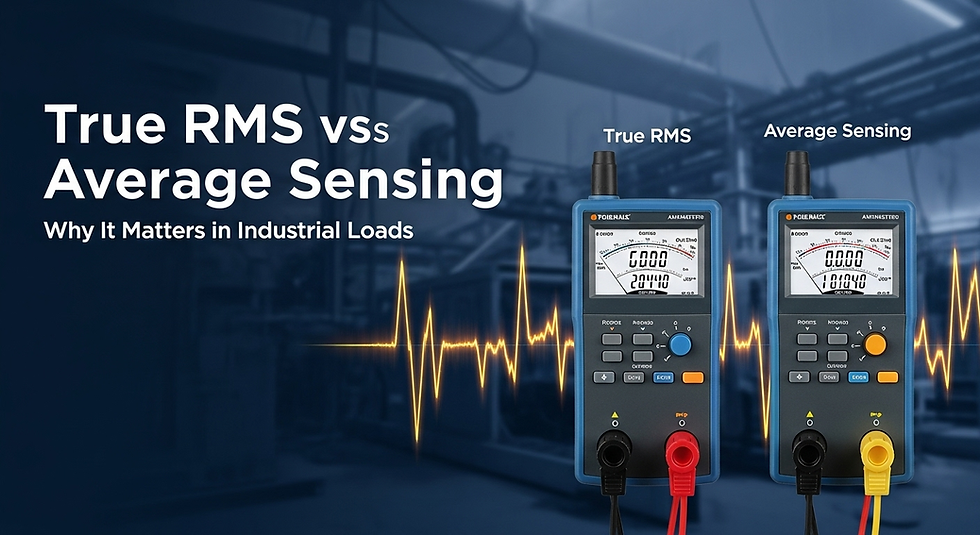MCB Trip Curves Explained: B, C, D, K & Z Types Simplified
- teddymccb
- Jun 24
- 3 min read

When selecting a Miniature Circuit Breaker (MCB) for electrical protection, one essential aspect is the trip curve. These trip curves determine how the MCB reacts to overcurrent situations and ensure safety for both equipment and people. In this blog, we’ll simplify the concept of trip curves—B, C, D, K, and Z—so you can make informed choices for your electrical installations.
🧭 1. What Are MCB Trip Curves?
An MCB trip curve shows the time it takes for the breaker to trip at various levels of overcurrent. Think of it as the MCB’s “personality”—how fast or slow it reacts.
Time-current relationship: The further above the rated current, the faster the trip.
Trip curve symbol: B, C, D, K, Z indicate distinct trip characteristics.
These settings help tailor protection for different circuits and load types.
🔍 2. Curve B: Fast and Sensitive
Trigger point: Trips between 3× to 5× its rated current.
Ideal use:
Lighting circuits
Receptacle circuits
General house wiring
Benefits:
Reacts almost instantly to avoid equipment damage and fire hazards.
Caveat:
Can nuisance-trip with high inrush currents (like LED drivers).
💡 3. Curve C: General Purpose with Inrush Tolerance
Trigger range: 5× to 10× the rated current.
Perfect for:
Motor protection
Air conditioners
Transformers
Socket circuits with power tools
Why choose C?:
Handles brief surges better than B without compromising protection.
Common use: Most industrial and commercial applications.
🔧 4. Curve D: Handles Heavy Inrush Loads
Trigger range: 10× to 20× rated current.
Best for:
Large motors
Heavy machinery
Welding equipment
Pros:
Addresses huge startup currents without tripping.
Cons:
Might allow dangerous overcurrents to persist slightly longer before tripping.
🧲 5. Curve K: Anti-Magnetizing Inrush
Trigger range: 8× to 12× rated current.
Designed for:
Industrial transformers
Highly inductive loads
Electromagnetic coils
Advantage:
Balances between sensitivity and inrush tolerance.
Useful for:
Transformer applications with mid-level startup currents.
⚡ 6. Curve Z: Ultra-Sensitive for Electronics
Trigger range: 2× to 3× rated current.
Ideal for:
Sensitive electronic circuits
Precision instruments
Telecommunication gear
Benefit:
Offers tight protection to avoid electronic damage.
Caution:
High chance of nuisance tripping with any surge.
📊 7. Comparative Overview
Here’s a quick reference to highlight the key differences:
Trip Curve | Trip Range | Best For | Pros | Cons |
B | 3–5× rated current | Lighting, general power circuits | Fast reaction to protect small loads | Trips on small surges |
C | 5–10× | Motors, transformers, power tools | Good balance of surge tolerance and protection | May trip late for heavy loads |
D | 10–20× | Heavy machinery, welding | Tolerates big startup currents | Allows prolonged overcurrent |
K | 8–12× | Transformers, inductive loads | Handles moderate inrush without tripping | Less common in retail |
Z | 2–3× | Electronic, telecom circuits | High sensitivity for micro-electronics | Very susceptible to surges |
🛠 8. How to Choose the Right Curve
Identify your load type:
Resistive (heaters), inductive (motors), electronic (sensitive devices).
Assess startup current:
Measure or estimate inrush current levels.
Check standards and regulations:
Refer to local conditions (e.g., IEC or UL guidelines).
Pay attention to operational needs:
Is resetting fast? Does the system value continuity or strict protection?
✔️ 9. Real-World Examples
Retail shop lighting: Ideal for B curve breakers for quick protection.
Air-compressor circuit: Uses C curve breakers to manage startup loads.
Industrial motor room: Employs D curve to avoid nuisance tripping during startup.
Server room: Utilizes Z curve for sensitive electronic equipment.
Factory transformers: Benefit from the resilience of K curve breakers.
Including these examples helps electricians and engineers select the right curve with confidence.
🎯 10. Don’t Forget the Ampere Rating
Curve types dictate behavior, but ampere rating determines load capacity.
Example: A 10 A C-curve breaker trips at 50–100 A during overloads.
Always size breakers 125% higher than continuous current to meet code requirements.
🧷 11. Installation & Maintenance Tips
Mount on DIN rail in clean, ventilated panels.
Tag breakers with curve and rating for future reference.
Regularly test breakers every 6 months for physical and trip function.
Replace, don’t repair—MCBs are one-time engineered units.
✅ Conclusion
Selecting the correct trip curve—B, C, D, K, or Z—is vital to ensuring safe electrical systems. Whether you're wiring offices, industrial plants, or data centers, matching the curve to your load’s characteristics avoids danger and saves downtime.
To source high-quality switches and find the right mini circuit breaker for your project, explore our range on the website or get in touch for tailored support and expert advice.



Comments